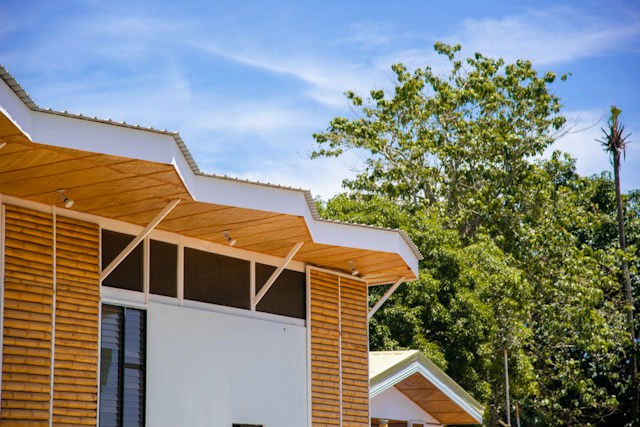When you live in a small apartment, closely surrounded by roommates and neighbors, you may feel the urge to head to the nearest open house. Longing for more space and greater privacy and dreaming of buying a home? You’re certainly not alone. Purchasing a home has multiple advantages including tax benefits, privacy and the fact that a home typically increases in value. But owning a home is an enormous responsibility, and can be a considerable drain on your finances as well as your time. So before you hit those open houses and trade your monthly rent for a mortgage, be sure you have a solid understanding of what it actually costs to own a home.
1. Down payment, mortgage, insurance and taxes
This is the real “meat” of your house payments, and usually what we first think of when we think of the cost of home ownership. Before you start touring open houses you’ll want to sit down with a qualified home lender, your banker or a real estate agent who can fully explain mortgage rates, how the down payment can affect your monthly payments, and tax implications. Home insurance is another cost you’ll need to be aware of, as most lenders require it when loaning money. Your insurance agent may also recommend other types of insurance like flood or earthquake insurance. Property tax is another cost and is usually outlined directly on the home listing. It’s a good idea to get pre-approved for a loan before attending open houses so you have a much better idea about how much home you can actually afford.
2. Utilities and operational costs
When you rent, your monthly check to the landlord may already cover some basic utility costs like garbage service, water or heat. Other operational costs would include paying for electricity, phone, TV or internet services. When you own a home you are responsible for paying these costs as well, and they may be higher or lower depending upon where the house is located and how large the house is. Remember that a large home is more expensive to heat and keep cool, and you’ll use more electricity as well. You might even have more than one TV and require multiple cable boxes. When looking at homes, you’ll want to take note of the listing details like how the home is heated, cooled and other utilities used (like oil or radiant heat). If your dream home uses a septic system (meaning it’s not connected to the main sewer line) or is heated by oil (instead of natural gas or electricity), these could create additional maintenance costs.
3. Appliances and equipment
Not all homes come outfitted with the latest stainless steel appliances or mechanical equipment. In fact, it’s not uncommon to see a house on the market listed without appliances at all. Appliances and equipment could include garbage disposal, range/oven, microwave, refrigerator, dishwasher, water heater and washer and dryer. It’s quite common that a new homebuyer may have to replace one of more of these appliances, either because they aren’t there to begin with or they are old. New appliances can be expensive, particularly if you need to purchase several at once. A new stainless steel French door refrigerator can cost upwards of $2,000, a new energy efficient washing machine can cost as much as $1,000. And that premium red-knobbed Wolf range/oven starts around $2,500 (you probably don’t want to hear how much a Lacanche costs). During the open house process, experienced homebuyers will look at all the appliances and equipment and verify their age (to estimate how many more years it has left) as well as which appliances will stay when the home sells. Aside from purchasing an appliance, new appliances may require additional upgrades to the home. For example, replacing an outdated electrical range to a new gas range may require a new gas line installation along with permitting requirements.
4. Maintenance, cleaning and repair
Homes need to be regularly maintained, cleaned and repaired to keep things operating smoothly. Some of these jobs you can do yourself (saving labor costs) but you’ll still have to invest in tools and supplies. Tasks like changing the air filter in the heating unit, fixing a running toilet, or repairing drywall are all part of the learning curve of becoming a homeowner. But some maintenance tasks will be beyond your skill set like electrical work, plumbing or foundation repair. New homeowners often rely upon friends, family or neighbors for help when it comes to knowing how to fix things around the home or when to do home maintenance. Using an online resource like Porch can make the job of finding the right professional much easier. Some maintenance costs are easy to anticipate, like repainting a room, which could cost as little as $100. But discovering a leak in your roof and requiring a full roof replacement can costs thousands of dollars. Some experts advise setting aside about 1%-3% of your total home cost each year for expected (or unexpected) maintenance. But even this calculation can be misleading. That new $15,000 roof should last 20 years but you might need to repaint that room every year. When looking at prospective homes, you’ll want to pay attention to things like “new roof” or “new fence.” In general, the size of the home and the age of the home could be the best way to budget for maintenance costs. Additionally, some homeowners pay monthly or annual homeowner association (HOA) fees, which goes towards shared operational and maintenance costs like neighborhood landscaping or tree service.
5. Cleaning costs
Cleaning your home is another important part of home maintenance. Because you are responsible for every part of your home and property, cleaning will include things beyond scrubbing the toilet or mopping the floors. Removing slippery moss from your driveway or walkway is very important, so is removing snow and ice. Cleaning your roof and gutters will also need to be done regularly and deep cleaning inside the home, like steam cleaning the carpets and vacuuming the air ducts, will also be part of your annual maintenance. Maintenance, cleaning and repair costs will vary greatly depending upon the task at hand and to be honest, you might not know what needs to be done until something breaks.
6. Pest control
How much you’ll need to spend on pest control will depend greatly upon where you live. Some climates experience few pest issues; other regions require monthly pest control services. Pest control expenses could range from the occasional bee infestation to regular spraying for ants to having to rebuild your deck due to termites. If you are looking at homes in particular area, it’s not a bad idea to start asking homeowners who live there what types of pest issues they have experienced in their homes and start gathering expected costs.
7. Furniture and furnishings
Buying a home usually means purchasing new pieces of furniture, particularly if you are planning a move from a smaller home into a larger home with more rooms. Although shopping for furniture and decorations is fun, it can quickly become an expensive hobby. Fortunately, whether you choose to fill every room in the new home with furniture or choose to live more minimally, is entirely up to you. When you see photos of Pinterest-worthy homes, what you might not realize is that those homes probably had an enormous furnishing budget or the homeowners spent many years decorating their home (or both). Most first-time homebuyers start with the basics and then slowly add furniture and décor over time. Putting a dollar figure on your home furnishings budget is pretty straightforward – all it takes is keeping a scrapbook of what you’d like for each room and start adding up costs. Keep in mind that new homes often need other furnishings besides furniture such as new light fixtures, bathroom mirrors or vanities, new window shades, outdoor furniture, or new carpeting. Even small expenses like a new doorbell system, new tableware or new bed linens can add up.
8. Landscaping
If your dream home includes a yard, be prepared for landscaping costs. This could include lawn care, tree maintenance, new plants or shrubs, water and irrigation, arbors or fences, pavers or pathways, as well as exterior lighting. Even if you hire a landscaping professional to take care of monthly maintenance, chances are you’ll still need to purchase tools and equipment like a lawn mower, a leaf blower, shovels, clippers, and other equipment. When looking at prospective houses it’s really important to assess the condition of the property and take into account the overall square footage of the yard. Take a look at the flowers and plants; will they need a lot of maintenance or water? What about the size of the trees and shrubbery, will they need regular trimming or removal? Even the most minimal of yards will require some care and maintenance, especially if you are interested in seeing how green of a thumb you have. The good news is that no one expects your yard to look spectacular overnight. Most homeowners work on their yards and landscape for decades, slowly adding or subtracting over time. For many homeowners, working in the yard is a labor of love and can be well worth the effort. Just be realistic about how much money and time you want to spend on maintaining a yard when looking at prospective homes.
9. Improvements and upgrades (aka Keeping up with the Joneses)
Whether your dream home is in the suburbs, a rural community, or the city, most homeowners want to improve or upgrade the home, either for personal enjoyment, resale value or simply to keep up with the Joneses. Home improvements can be flashy like a swimming pool, a wine cellar, a home theater, or a fully equipped outdoor kitchen. But they can be as run-of-the-mill as an updated kitchen, new flooring or new windows. Keeping your home up-to-date is important, especially when it comes time to sell it. Understanding the full cost of these improvements, as well as the expected value of these improvements, will help you prioritize needs versus wants. There are many resources available to help you understand the expected return on investment (ROI) of a particular home improvement or upgrade. Where you live will have a big influence on the actual ROI of these projects, as will other factors like the overall cost of improvement, the age of your home, your specific neighborhood and the current real estate environment. Most experts agree that if you want to add a home feature that is really important to you and your family, and you’re planning on living in your home for many years, you’ll probably receive value. But if your new home is merely a short-term investment, spending a lot of money towards home features that aren’t universally appealing may be an expensive endeavor.
Top image credit: Ag-Trac Enterprises




